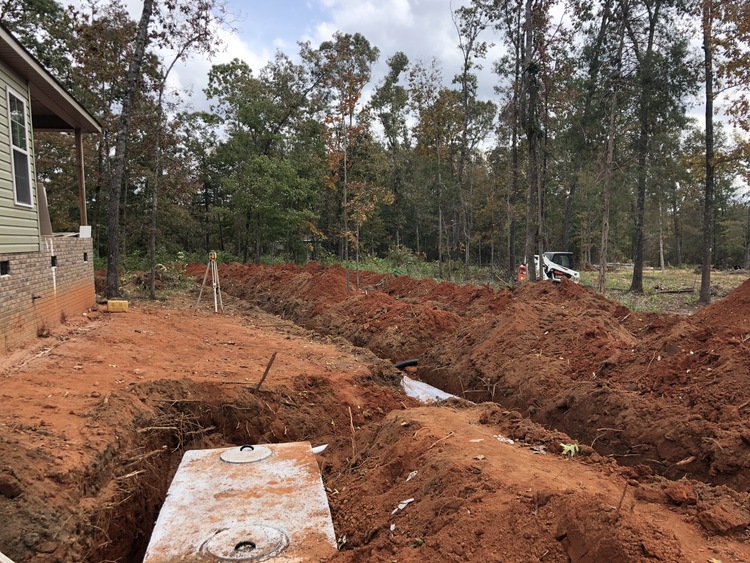Call This Monday to Get $25 OFF
Clean Solutions, Dirty Jobs – Done Right. Reliable. Responsive. Remarkable.
Call This Monday to Get $25 OFF
Clean Solutions, Dirty Jobs – Done Right. Reliable. Responsive. Remarkable.
A septic system is designed to drain wastewater out of a home or commercial building. It is comprised of drain lines, a septic tank, and drainfield (leach field). When a septic tank is situated below the drainfield, a lift station is installed to pump wastewater from a lower elevation to a higher level through pipes.

Let’s look at the components of a septic system:
Pipes
Your home’s plumbing is connected to pipes that lead away from sinks, tubs, and toilets to the septic tank. All the pipes connected to various drains run to a single drain line. These pipes are vulnerable to clogs, especially when your run things like grease, eggshells, and cooking oil down the drain. You should be careful about what you run down the drains to avoid clogged drains.
The septic system is an onsite waste treatment facility, and it is incredibly reliable. However, the system is only as effective…
Imagine flushing your toilet and then suddenly realizing that your backyard has turned into a swampy mess. This unpleasant experience is…
Soil testing is a critical step in various construction and environmental projects. It provides essential information about the ground conditions, which…
Grease traps are remarkable tools that help keep your establishment clean and free from bad odors. Septic Connection has a…
If you have just moved into a new home or property that relies on a septic system for waste and wastewater…
Septic Tank
A septic tank is a watertight sedimentation tank typically made of concrete, brick work, or PVC. It is designed to hold the waste generated by the domestic household. When you run water down the drains, it makes its way into the septic tank, whereby the solid waste settles at the bottom, separating from the water. The bacteria in the septic tank breaks down the solids into more manageable materials, and the effluent is released into the drainfield. A septic tank includes compartments and a T-shaped outlet that prevents sludge from draining into the drainfield. If sludge finds its way into the drainfield, it could cause environmental damage and even clog drainfield pipes.
Lift Station
As we’ve already mentioned, a lift station is installed in homes that lack the gradient that allows for a natural flow of wastewater into the drainfield. The purpose of a lift station is to pump wastewater from a low-lying area to a higher elevation so that the wastewater can be discharged into the drainfield.
Drainfield
Also known as a leach field, a drainfield is a network of perforated pipes buried 2 to 4 ft. underground running from the septic tank, a series of trenches, gravel, and soil. The pipes are perforated to release wastewater into the surrounding soils, after which it’s through a natural filtration process. The effluent entering the drainfield is filtered naturally when it percolates in the soil to remove harmful bacteria and viruses. The natural bacteria and microbes present in the soil break down the waste, and the filtered gray water eventually settles into the groundwater. Like other parts of a septic system, the drainfield has to be maintained properly to avoid problems such as sewage odors, soggy areas, and oversaturation. It’s recommended that you have your drainfield inspected at least every three years to keep it in good working order.
If you are in need of septic tank services, you can count on Septic Connection to provide you with reliable services at competitive rates. We are an experienced septic company that provides a wide range of septic services, including septic tank cleaning, septic repair, septic pumping, and more.
Buying a home with a septic system can feel intimidating if you’ve never had one before. Unlike city sewer systems, septic systems rely on regular care and professional service to…
Read moreHosting a big party at your home can be exciting, but it also brings a unique set of challenges, especially when you rely on a septic system. Between extra guests,…
Read more